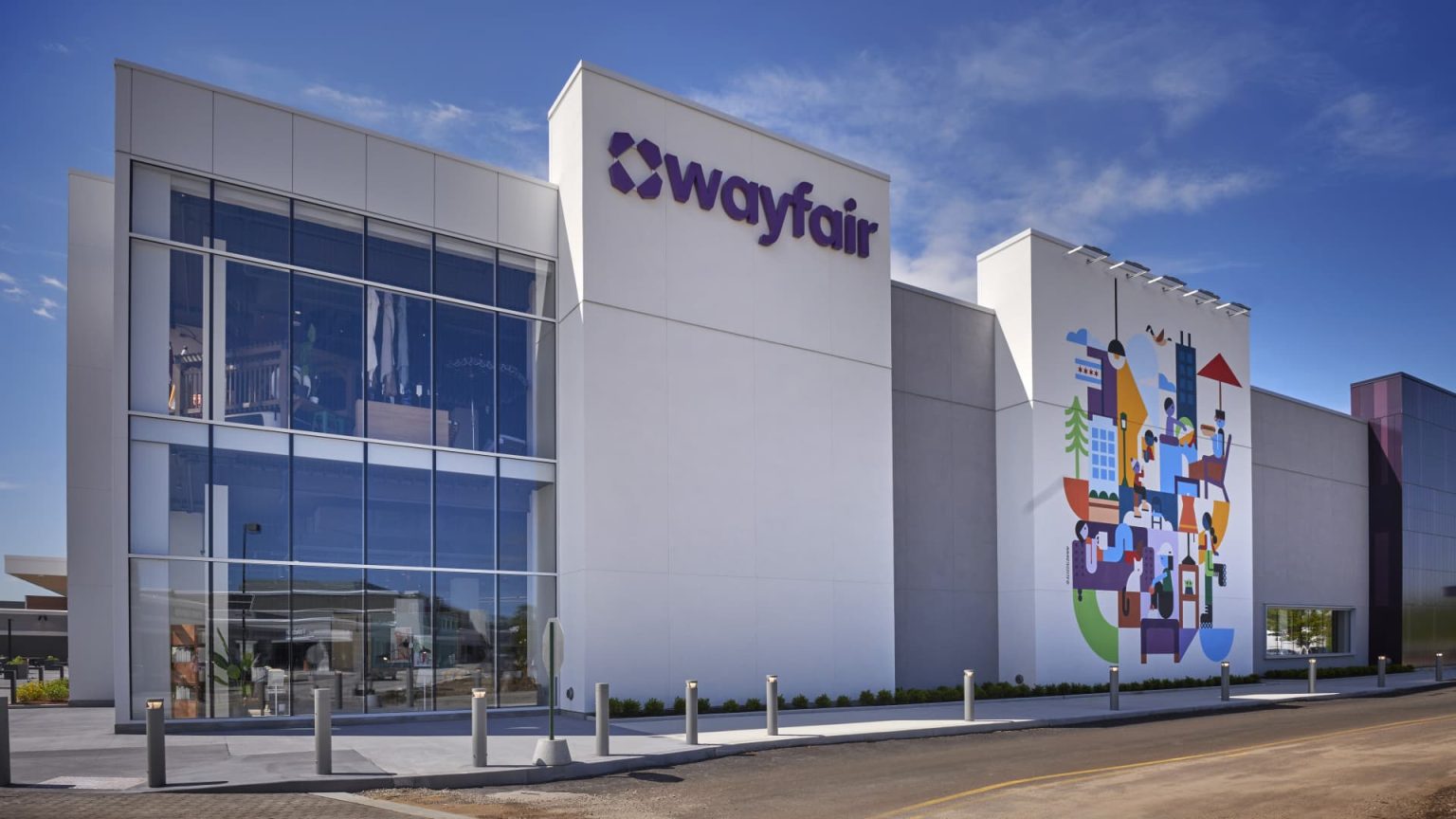Wayfair, an online home goods retailer, is opening its first namesake store near Chicago, reflecting a trend of digitally native companies turning to brick-and-mortar for growth. The company, known for persuading consumers to buy furniture online, acknowledges the importance of offering an in-store experience for certain product categories that are visual, tactile, or considered purchases. Wayfair’s CEO Niraj Shah emphasizes that in-store experiences can be more pleasurable or effective for customers who may prefer working with an associate, discussing financing, or receiving design help.
The 150,000-square-foot Wayfair store in Wilmette, Illinois, is set to open on May 23, marking the company’s entry into physical retail alongside other direct-to-consumer brands like Warby Parker, Figs, Casper, Glossier, and Everlane. The move comes as online-only companies face challenges in advertising due to privacy changes, increasing competition, and the rising costs and risks associated with online retail. Moreover, the shift to offline retail is fueled by the fact that the vast majority of retail sales in the U.S. still occur offline, demonstrating the enduring importance of brick-and-mortar stores in the retail landscape.
Wayfair’s new store will resemble an Ikea in size with an on-site restaurant but will offer a diverse range of home products to become a one-stop shop for home essentials. The company plans to open a portfolio of large-format stores across the U.S., building on the success of its smaller specialty retail locations under brands like All Modern and Joss & Main. As brick-and-mortar retail experiences a resurgence, Wayfair’s physical store ambitions align with a larger trend of direct-to-consumer brands expanding into retail spaces to reach new customers and boost sales.
Expanding into physical retail presents challenges and high entry costs for direct-to-consumer brands that have predominantly operated online. Companies looking to open stores need to navigate location selection, logistics, driving foot traffic, and managing store operations, which require significant time, budget, and resources. Some brands have faced setbacks after rapid store expansions, leading to closures of underperforming locations to focus on maximizing the productivity of remaining stores. Wayfair, which has not turned an annual profit since 2020, will need to carefully navigate the challenges of physical retail expansion.
Despite the challenges, many direct-to-consumer brands are recognizing the benefits of brick-and-mortar stores in attracting customers, driving sales, and building brand recognition. Companies like Warby Parker, Figs, Brooklinen, Burrow, and Everlane have successfully expanded into retail spaces, contributing to revenue growth and increasing brand visibility. While the shift to physical retail may require a steep learning curve and strategic planning, it offers opportunities for brands to diversify sales channels, engage with customers across multiple platforms, and establish a stronger brand presence in an evolving retail landscape.
As the retail industry continues to evolve, the resurgence of brick-and-mortar stores highlights the enduring appeal of physical retail experiences. Despite the rise of e-commerce, direct-to-consumer brands are increasingly recognizing the importance of offline interactions in driving sales and enhancing brand loyalty. By strategically leveraging both online and offline channels, companies like Wayfair are adapting to changing consumer preferences, exploring new growth opportunities, and building a sustainable retail strategy for the future.


